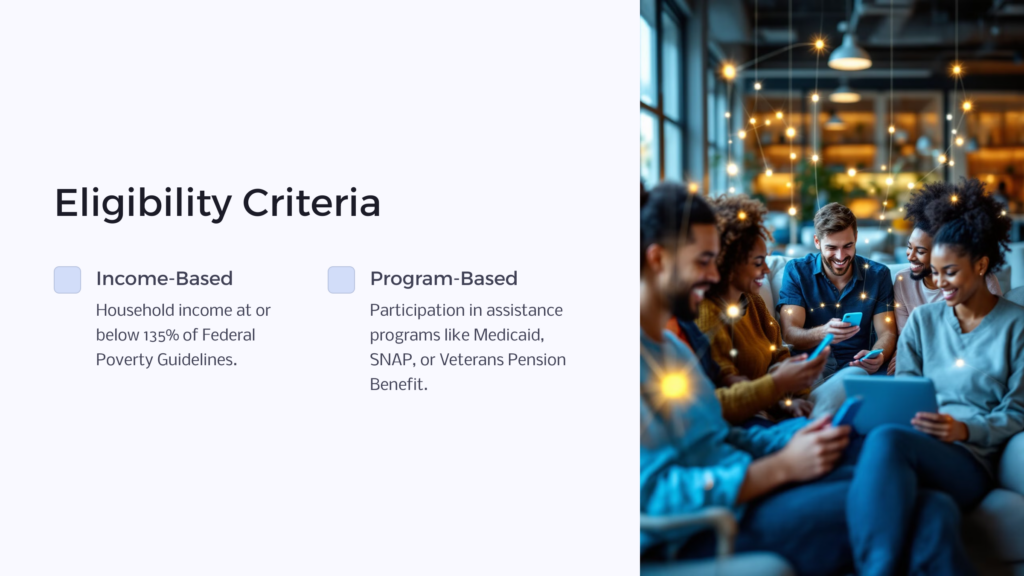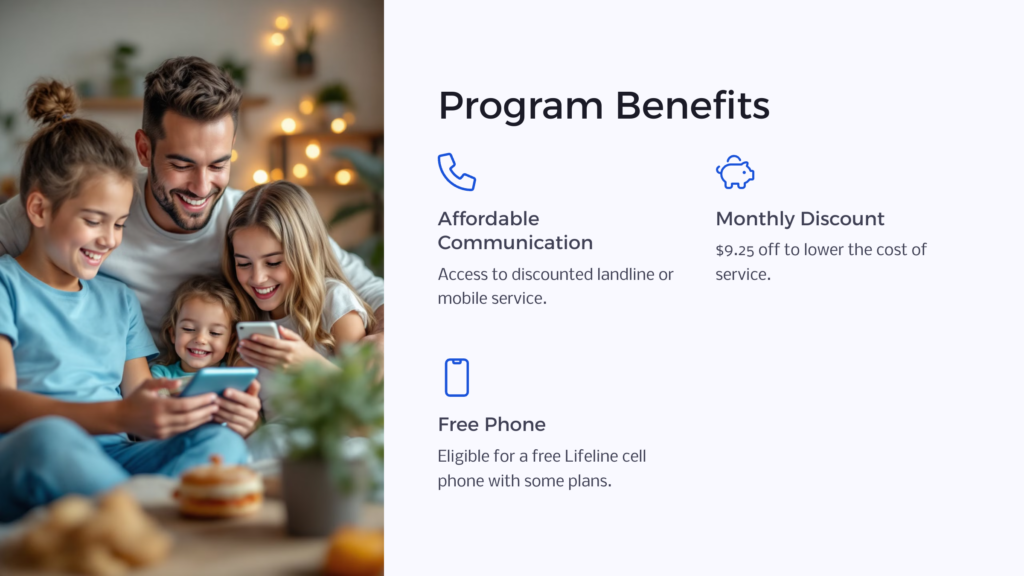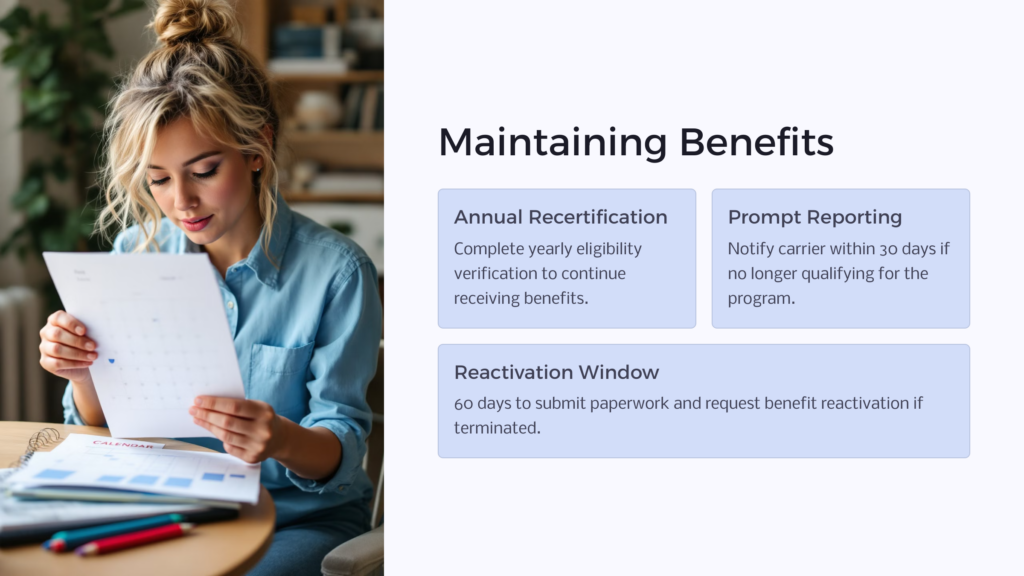The Lifeline Program, a government assistance initiative managed by the Federal Communications Commission (FCC), discounts monthly phone/internet service to eligible low-income households.
The program was designed to ensure that low-income families aren’t left behind in a digitized world where connectivity is not a luxury but a necessity.
Overview of the Lifeline Program
The Lifeline Program originated in the tumultuous economic period of the 1980s when the Regan administration created it to provide discounted phone service to low-income Americans. As technology progressed and the internet began to permeate almost every aspect of life, the Lifeline Program evolved accordingly. In 2016, broadband internet service was included as a discount option, making the Lifeline Program instrumental in promoting digital inclusion. The underlying purpose and goal of the Lifeline Program lie in providing accessible communication services to low-income families, thereby advancing digital equity and social inclusion.
Who is the Lifeline Program For?
The Lifeline Program is designed for low-income households who meet specific eligibility criteria and seek assistance in affording monthly phone or internet services. It aims to bridge the digital divide by providing discounts to marginalized groups, ensuring they stay connected in today’s digital world. Individuals who belong to low-income households and meet the specified eligibility requirements should consider applying for the Lifeline Program.
Eligibility for the Lifeline Program

To be eligible for the Lifeline Program, you must either:
- Have an income that is at or below 135% of the Federal Poverty Guidelines
- Participate in certain assistance programs such as Medicaid, Supplemental Nutrition Assistance Program (SNAP), or Veterans and Survivors Pension Benefit.
Benefits of the Lifeline Program

Key Lifeline Program benefits include:
- Access to affordable communication services
- Choice of discounted landline or mobile service
- Option to receive a free Lifeline cell phone if eligible
- Monthly discount of $9.25 to help lower the cost of service
- No activation fees, deposits, or recurring charges with some plans
Overall, the Lifeline Program makes telephone and internet services more economical for low-income Americans. This helps increase access to job opportunities, education, healthcare, and more.
Documents Required for Lifeline Program Application
When applying for the Lifeline Program, you must provide documentation verifying your eligibility. The required documents depend on whether you qualify through your income or participate in an assistance program.
For Income-Based Eligibility
If you qualify for Lifeline through your household income, you must provide official documentation showing your income is at or below 135% of the federal poverty guidelines. Acceptable documents include:
- Prior year’s state or federal tax return
- Current income statement from an employer
- Paycheck stubs for 3 consecutive months
- Social Security statement of benefits
- Veterans Administration statement of benefits
- Retirement or pension statement of benefits
- Unemployment or Workers’ Compensation statement of benefits
- Federal or Tribal notice letter of participation in General Assistance
- Divorce decree or child support document containing income information
Any income documentation must be official and current within the previous 12 months. Documents or photocopies are acceptable if they clearly show your household income level.
For Program-Based Eligibility
If you qualify through participation in one of the listed assistance programs, you will need documentation showing your current enrollment. Acceptable documents include:
- Medicaid benefit card
- SNAP benefit card
- SSI benefit letter
- Federal Public Housing Assistance lease agreement
- Veterans Pension certificate letter
- Tribal program enrollment ID card
These documents verify that you or someone in your household is actively enrolled in a qualifying assistance program. Most benefit cards or letters will have the name of the person receiving services, which must match the name of the Lifeline Program applicant.
In either case, the required documentation is necessary to prove that the applicant meets the eligibility requirements for the Lifeline Program. Failing to provide acceptable documentation could result in applications being denied.
Steps to Apply for Lifeline Program

Applying for the Lifeline Program largely consists of 5 key steps:
- Checking your eligibility
- Gathering necessary documents
- Filling out the Lifeline application form
- Submitting the application and documents
- Waiting for application review and response
Below is a more detailed walkthrough of each step to take when signing up for Lifeline assistance:
1. Checking Eligibility
First, you will want to verify that you meet the income or program-based eligibility requirements for Lifeline (see previous sections).
Additionally, you can only receive Lifeline benefits from one phone provider per household. You will need to certify that no one else at your address is already receiving a Lifeline Program discount.
2. Gathering Necessary Documents
Once you’ve determined your eligibility, you should gather documentation that verifies your qualification for Lifeline. Refer to the lists of accepted documentation earlier in the guide.
Documents should show current enrollment in a qualifying program or that your household income level meets Lifeline requirements. Make copies of your documentation if necessary.
3. Filling out the Application
With your eligibility verified and documents in hand, you can complete the Lifeline Program application form. Below are some tips for filling it out:
- Choose which phone carrier you want to provide your Lifeline service. Most major carriers participate.
- Carefully provide required personal information like legal name, birthdate, and home address. This should match your documentation.
- Indicate if you qualify for Lifeline through a program or income level along with the number of people in your household.
- Agree to recertify continued eligibility for Lifeline on an annual basis.
- Answer all questions completely and accurately to avoid processing delays.
- Sign and date the certification section which authorizes the carrier to access eligibility records if needed.
4. Submitting the Application
Once finished, you will submit the Lifeline application and copies of your eligibility documentation. Many carriers allow you to apply online, in person, or by mail.
For mailed applications, send to the mailing address provided by your carrier of choice. Online submissions will have electronic copies requested. Be sure documents are legible and all personal data is clearly visible.
After submitting, you will receive confirmation from your phone carrier as they review your application.
5. What to Expect After Submission
The carrier has 30 days to process Lifeline Program applications. If your initial submission is incomplete, you may need to provide additional documentation later.
Once approved, you will receive written confirmation of your Lifeline benefit eligibility. At that point, you can select service plans that are discounted by up to $9.25 per month. Plans vary across carriers.
Denials typically occur due to incomplete documentation or not meeting eligibility criteria. If your application is denied, you will also receive written notification indicating the reason along with appeal instructions.
Tips and Suggestions for Successful Application
Applying for Lifeline can seam relatively straightforward. However, there are a few key suggestions that can help ensure your submission is complete and avoid denial or processing delays:
Organizing Documents
- Make copies of original eligibility documentation rather than submitting the actual benefit cards, letters, etc.
- Highlight relevant data on documentation such as names, income figures, and program enrollment dates.
- Double-check that all personal identification matches on both the application and documentation.
- Keep copies of all completed forms and documentation for your records if needed.
Filling Out the Application
- Use your full legal name rather than nicknames or abbreviations.
- Provide the current household address where the Lifeline service will be activated.
- Read eligibility certifications carefully to ensure they’re accurate.
- Double check the application for completeness and signatures/initials on all indicated fields.
Asking for Assistance
- Contact the carrier if you have questions on which documents to provide.
- Use application assistance programs in your state if needing extra help.
- Consider authorizing the carrier to access your eligibility databases online to verify your enrollment status.
- Call carrier support lines for any issues with the application portal or process.
Taking these extra steps helps minimize issues or confusion when submitting Lifeline forms. Having organized documents and complete application information can facilitate quicker approval.
Maintaining Your Lifeline Program Benefits

Once approved for Lifeline, subscribers must complete annual recertification of their eligibility to maintain discounted service benefits. Below are key details on continuing Lifeline qualifications:
- Carriers must confirm Lifeline subscribers’ eligibility each year, typically on the anniversary of the service’s activation.
- Subscribers will be notified by their carrier when it is time to recertify continued Lifeline qualification.
- Current program enrollment documentation or income details must be submitted as part of this annual renewal process.
- Failing to complete the annual recertification will lead to your Lifeline benefits being stopped, typically within 30 days of non-response.
- After benefits are terminated due to lack of recertification, subscribers have 60 days to submit paperwork and request reactivation of Lifeline service discounts.
Additionally, Lifeline participants must notify their carrier within 30 days if they no longer qualify for the program due to things like income changes, relocation outside of Tribal lands, etc. This allows the subscriber to avoid penalties or fraud accusations if they fail to report non-compliance.
Overall, properly maintaining eligibility by completing annual renewal certification and promptly reporting status changes enables continuous reception of Lifeline benefits.
FAQ
Below are answers to some of the most frequently asked questions regarding the Lifeline Program application process:
What information is needed to determine my eligibility?
You must provide official documentation showing your annual household income or participation in qualifying assistance programs like Medicaid, SNAP, Federal Public Housing, etc.
What documents should I send with my application?
Please provide copies of benefit cards, award letters, income statements, or tax returns that clearly confirm your name and Lifeline eligibility. Highlight relevant identifying details.
How long does it take to find out if I’m approved?
Carriers have 30 days to process completed Lifeline Program applications and documentation. Once you are determined eligible (or if additional documentation is needed) you will receive written notification by mail.
Can I still apply if I already have phone service?
Yes, you can apply even if you have active phone service. If approved, the Lifeline discount will be applied to your next billing cycle going forward. Discounts last for 12 months before requiring renewal certification.
What if someone else at my address already gets a Lifeline discount?
Unfortunately, Lifeline Program rules prohibit more than one subscriber receiving discounted services per household. Double-check check that no one else at your physical address already has an active Lifeline benefit.
What happens after I’m approved for Lifeline assistance?
Once approved, contact your carrier to select a service plan discounted by the $9.25 monthly Lifeline benefit. Review available plans that fit within your budget and calling/data needs.
Why would my Lifeline application be denied?
The most common reasons for denial are incomplete documentation and not meeting eligibility requirements. Carefully review the criteria and ensure you submit acceptable documents verifying income, program participation, identity, and address details.
Following the guidance across each step outlined here helps simplify applying for and maintaining affordability through the Lifeline Program. Reach out for help if any questions arise throughout the process.
The Future of the Lifeline Program
As we navigate through an increasingly digitized era, potential changes and emerging trends in the Lifeline Program can be envisioned. There’s a growing call for expanding the program to reach more individuals, primarily in light of the COVID-19 pandemic, where connectivity has become a dominant factor in education, healthcare, and employment. Experts predict an upward trend in digital dependence in the future. They assert that the Lifeline Program could be instrumental in mitigating the challenges that come along, thereby promoting digital equity significantly.
 Benefits.com Advisors
Benefits.com Advisors
With expertise spanning local, state, and federal benefit programs, our team is dedicated to guiding individuals towards the perfect program tailored to their unique circumstances.
Rise to the top with Peak Benefits!
Join our Peak Benefits Newsletter for the latest news, resources, and offers on all things government benefits.




















